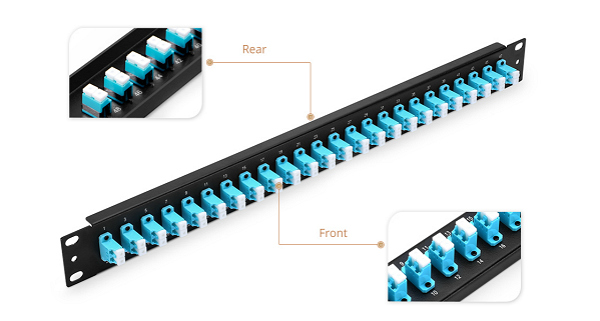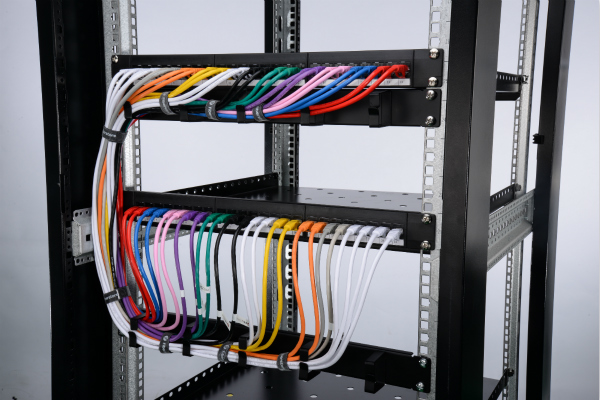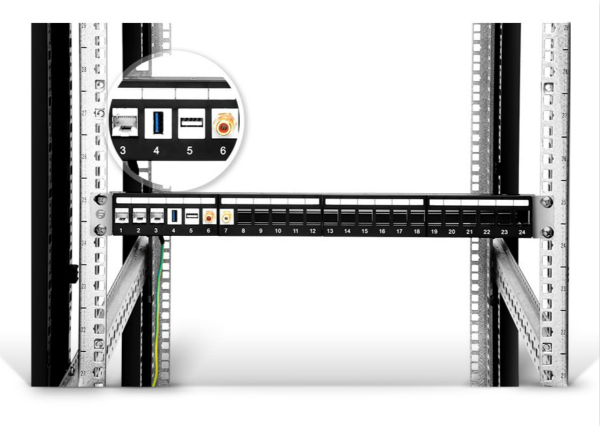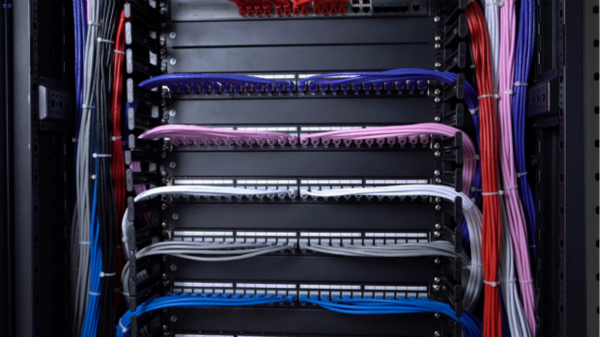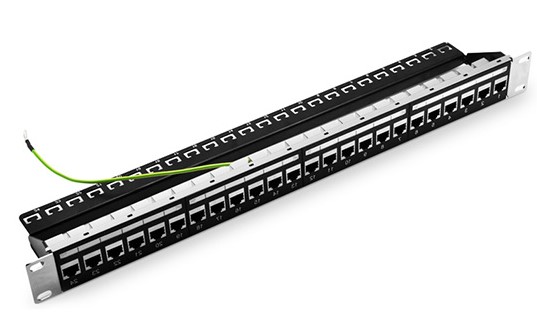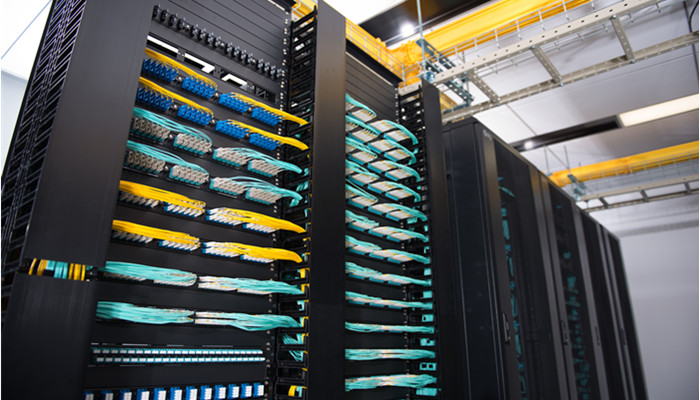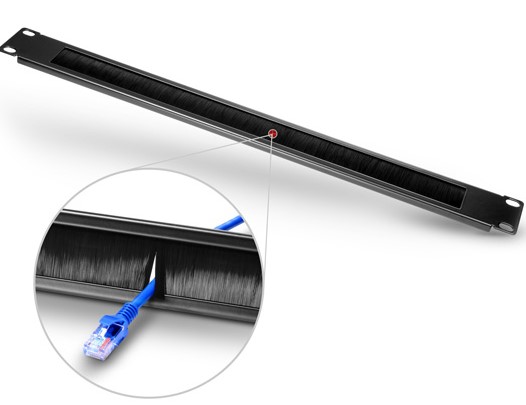As we know, patch panel is a passive device with a number of ports. It’s a cable management tool that most frequently used, typically in a data center. However, for some people, they are still confused about the function of patch panel, and post questions on forum such as what is the purpose of patch panel in networking, why not connect end device directly to switch? This article will help you find the answer.
How Patch Panel Works
Patch panels work in different ways due to the two types, fiber patch panel and copper patch panel. Usually, fiber patch panel is designed with ports both on the front and rear sides. Just insert the corresponding fiber cables into the ports, then you can achieve a neat cable management.
Figure 1: Fiber patch panel has ports on both sides.
Unlike the fiber patch panel, copper patch panel is divided into feed-through and punch down types. The feed-through panel contains RJ45 ports on two sides, which is convenient for users to plug the cables. And the punch down panel is equipped with Rj45 ports on the front side and punch down terminations and color coding on the rear side. Each set of punch down terminations corresponds to a port on the front side. So you have to terminate all cables into the patch panel first.
Figure 2: The rear side of copper patch panel.
Main Function of Patch Panel
As a cable management tool, the primary benefit of using patch panel is the improved organization and easier management of your network. But how? As the figure 3 shows, a patch panel is usually installed within a server rack. And you may encounter many or even thousands of fiber optic cables and cable connection. Using a patch panel, you can label the patch panel, so that you know which end device or room the cable run goes to. This will be helpful when you need to make changes on the cables.
Also, we can see that all cables on the server rack have a bend radius (a term used to describe how sharply a cable can safely bend at any given point). If the fibers bent beyond the minimum bend diameters may lead to break, causing network failures. Therefore, using a patch panel, the cables bend radius will be reduced, which can enhance the cables’ long term reliability.
As described above, we have learned the main function of patch panel is to provide a robust, reliable management solution and protect the cables. It doesn’t have any electrical or logical function like the network switch or router. Patch panel is solely a physical connection, which means patch panel can’t replace a switch or a router.
Figure 3: Cables are connected to the patch panel.
Where to Buy Patch Panel
FS.COM is the reputable source to buy patch panels. The following are some 1U patch panels I’d like to recommend to you.
FS 1U fiber patch panels are designed with LC and SC ports. In order to meet different customers’ demands, FS has released 24 port patch panel and 48 port patch panel.
|
FS P/N
|
FHU-FPP48FLC10GMM
|
FHU-FPP48FSCSMF
|
FHU-FPP96FLCHSMF
|
|
Adapter Type
|
LC Duplex
|
SC Duplex
|
LC Duplex
|
|
Fiber Mode
|
OM3/OM4
|
OS2
|
OS2
|
|
Fiber Count
|
48 fibers
|
48 fibers
|
96 fibers
|
|
Insertion Loss
|
≤0.2dB
|
≤0.2dB
|
≤0.2dB
|
|
Return Loss
|
≥50dB
|
≥50dB
|
≥50dB
|
These 1U patch panels adopt the same material and design, but for different fibers connections. You can choose one according to your actual need.
FS provides Cat5e and Cat6 patch panels. Both are available in feed-through and punch down types. Here are the best-selling products.
|
FS P/N
|
C5EP-U24FT1U
|
C6P-U24FT1U
|
|
Cable Category
|
Cat5e
|
Cat6
|
|
Termination
|
Feed Through
|
Feed Through
|
|
Application
|
Unshielded
|
Unshielded
|
|
Port No.
|
24
|
24
|
The two products are used to connect unshielded copper cables. They share the same design. When you need to buy a copper patch panel, you should know what cables you want to connect, and this is very important.
If you need versatility of running different types of networking cable on a project, blank keystone patch panel is suitable for you. With a blank keystone patch panel, you can combine Ethernet cable, fiber cables through one patch panel. The following is a blank keystone patch panel from FS.COM. With no keystone jacks are pre-loaded into it, you can customize it according to your application.
Figure 4: Use blank keystone patch panel to make a mixed connection.
Conclusion
From the above, we know the main function of patch panel is to terminate all the cables, and provide a neat, reliable solution for cabling. When you want to buy one, please contact us via sales@fs.com.

